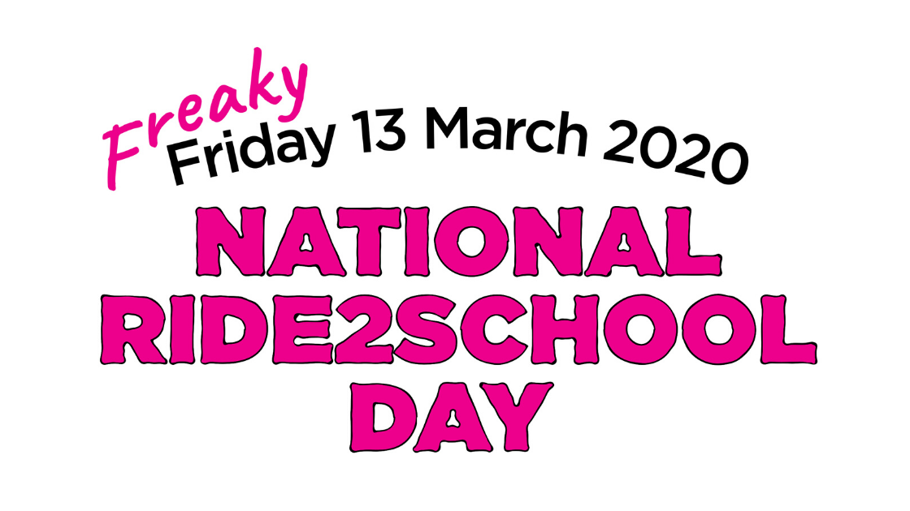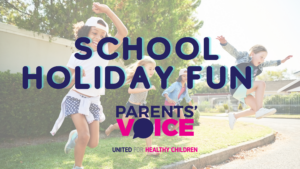The following blog comes from a regular contributor, Sarah Dwyer, who is a mother of three and one of our parent members. In this latest piece she explores the pros and cons of letting kids use active travel to get to and from school and discusses why initiatives such as Ride2School Day are an important step in improving physical activity environments for kids everywhere.
So, it’s National Ride2School Day on Friday 13th of March. Ride2School Day is an Australian wide program that is designed to support schools and parents/carers in encouraging, empowering and enabling our children to get active on their way to school. Delivered by the Bicycle Network with the Victorian and Tasmanian Governments as partners, the initiative aims to address the problem of just two in ten students riding or walking to school[i].
Sounds like a great idea doesn’t it? Using active travel to take a short trip that you would be making anyway. But here’s the thing – I love the idea of Ride2School Day, but in reality, there are a few things that make me feel a bit apprehensive about taking part. Firstly, although we live less than 2 kms from the kids’ primary school (Google maps tells me it’s an 8-minute ride), we’d unfortunately have to travel up a couple of steep hills to get there. Which let’s be honest, shouldn’t be a problem, but add to this picture a 5, 3 and a 1 year old plus me at 8:30 am after wrangling all three of them to make sure they have eaten, dressed, brushed their teeth and put on sunscreen, then suddenly riding to school no longer seems like an easy feat and in all honesty I was never sold on the idea. BUT all is not lost. As a parent I always want to model and instil in my kids’ good behaviours that encourage healthy habits and actions. So, lately I have been doing some further research into this and I have found that there are some great resources on the Bicycle Network website that will make jumping on the bike that little bit easier for everyone.
For us Parent’s there is a Parent’s Portal which I wish I had stumbled across sooner! Here there are numerous resources to help us get our kids ready to ride but also keeping them safe whilst doing so. There are informative videos (which only take about 30 seconds each to watch), as well as downloadable fact sheets that go into details such as how to choose the right sized bike, how to fit a helmet correctly and among others, the different aspects that come into play when learning to ride like finding the right surface to practice on and braking and balancing. For me the guide on how to give your bike a quick mechanical check has been a game changer. I had never really been taught how to do this myself, so learning together with my eldest was a nice little activity – and a practical one too.
Photo Credit: Bicycle Network – Ride2School Day
If schools want to jump on board and participate they can sign up in the HandsUp! Counts section where they can create an online account. This can help measure the number of students riding and walking to school and track the school’s progress of kids participating in active travel over time, which can then be used as an advocacy tool to improve walking and riding conditions in the local area.
And initiatives like these seem to be having an effect. The Victorian Health Promotion Foundation recently revealed that during Walk to School Month in October last year, an estimated 186,600 students (the highest in the initiative’s 14-year history) participated. What is great about this is not just the number of kids using active transport to get to school, but it was almost 40,000 more children than in 2018. That’s around one in three primary school aged kids in Victoria[ii].
The benefits of active transport are easy to see;
- By riding, scooting or walking to school it can help contribute to the minimum of 60 minutes of exercise children under 18 are recommended to do in Australia[iii], thus reducing their amount of sedentary time.
- It reinforces correct pedestrian behaviours and road safety rules that are fundamental in fostering independence in getting to and from places such as school, home or the local park[iv].
- Research has shown that children who chose active travel to get to school arrive awake and alert, improving their concentration in class[v].
- There is less congestion in the streets that surround schools which is better from an environmental perspective and our stress levels too due to not having to find a car park!
- And although it may not seem like it in the short term, if done regularly and frequently enough, drivers will also saving on petrol, making it a cost-effective way to get from A to B.
After all of my research it has become clear to me that the benefits of participating in active travel far out way the negatives and that there are ways to overcome the barriers of participating in initiatives like Ride2School – for me that may mean being a little more prepared the night before (like having the helmets and bikes/scooters out and ready to go), leaving a little earlier than normal, driving part-way and riding the rest or talking to the kids to let them know that they may need to be more cooperative, but the benefits to their health and wellbeing (and ours as parents too) are definitely worth it.
As you can see, active transport is easy, effective, affordable and environmentally sound. So, who else will be joining us in riding, scooting or skating to school on National Ride2School Day?
Feature Photo Credit: Bicycle Network – Ride2School Day
[i] Bicycle Network, 2020. ‘Ride to School Day’. https://www.bicyclenetwork.com.au/rides-and events/ride2school/ride2school-day/ Accessed 02/03/20.
[ii] The Victorian Health Promotion Foundation. 2020. ‘Record number of Victorian students walking to school’. https://www.vichealth.vic.gov.au/media-and-resources/media-releases/record-number-of-victorian-students-walking-to-school Accessed 02/03/20.
[iii] Australian Government Department of Health. 2019. ‘Australia’s Physical Activity and Sedentary Behaviour Guidelines and the Australian 24-Hour Movement Guidelines’. https://www1.health.gov.au/internet/main/publishing.nsf/Content/health-pubhlth-strateg-phys-act-guidelines Accessed 03/03/20.
[iv] Bicycle Network, 2020. ‘Ride to School Day’. https://www.bicyclenetwork.com.au/rides-and events/ride2school/ride2school-day/ Accessed 02/03/20.
[v] Duggan, M, Fetherston, H, Harris, B, Lindberg, R, Parisella, A, Shilton, T, Greenland, R & Hickman, D 2018, Active School Travel: Pathways to a Healthy Future, Australian Health Policy Collaboration, Victoria University, Melbourne. ISBN: 978-0-9946026-9-5





